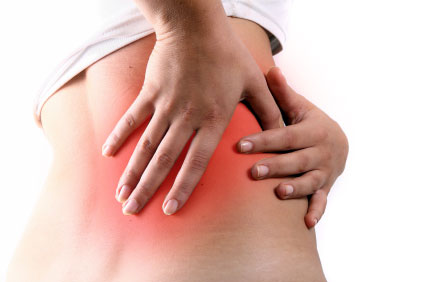 Usually the short stay in draft, the too heavy shopping bag or the famous “wrong movement”, and already the pain is there. In such a situation, most people want only one thing: to move as quickly as possible without pain. If then the emergency medication, the hot water bottle and the “always good special tip of the neighbor” does not help any more or the complaints deteriorate even goes to the specialist. And not infrequently, the doctor can do just that with a targeted syringe in the “right place and at the right time”, and interrupt this pain cycle. The injection is actually not as bad as their reputation. If they do not, like many others, know of good and bad experiences from the past, it replaces a causal and fundamental necessary treatment concept. However, not every syringe is the same, even if this is often generalized with the patient and also the doctor. Is it a muscle hardening, tendon tension or rather a nerve root irritating disc herniation? Do the pain out or are they restricted to a particular area? Is the pain dull, piercing, or rather tearing? These and many other questions will make a good doctor and also take into account other necessary aspects (illnesses / injuries / medicines, etc.) before he canal the cannula. As a rule, a general, systemically effective “universal syringe” with pain relievers, muscle relaxants and anti-inflammatory agents is often successfully used by the GP. But not only the ingredients, but also the location and type of injection, vary according to the medical indication. The four most important “targeted special injection forms” are compiled here briefly and informatively.
Usually the short stay in draft, the too heavy shopping bag or the famous “wrong movement”, and already the pain is there. In such a situation, most people want only one thing: to move as quickly as possible without pain. If then the emergency medication, the hot water bottle and the “always good special tip of the neighbor” does not help any more or the complaints deteriorate even goes to the specialist. And not infrequently, the doctor can do just that with a targeted syringe in the “right place and at the right time”, and interrupt this pain cycle. The injection is actually not as bad as their reputation. If they do not, like many others, know of good and bad experiences from the past, it replaces a causal and fundamental necessary treatment concept. However, not every syringe is the same, even if this is often generalized with the patient and also the doctor. Is it a muscle hardening, tendon tension or rather a nerve root irritating disc herniation? Do the pain out or are they restricted to a particular area? Is the pain dull, piercing, or rather tearing? These and many other questions will make a good doctor and also take into account other necessary aspects (illnesses / injuries / medicines, etc.) before he canal the cannula. As a rule, a general, systemically effective “universal syringe” with pain relievers, muscle relaxants and anti-inflammatory agents is often successfully used by the GP. But not only the ingredients, but also the location and type of injection, vary according to the medical indication. The four most important “targeted special injection forms” are compiled here briefly and informatively.
Neuraltherapy – After physical exertion / maladjustment or even unusual cold / drafts, a muscular hardening of the muscles can occur, which can not be overcome by careful movement (eg acute skew). Through the targeted injection of a local anesthetic into certain skin points or in the vicinity of muscle and nerve cords, a pain-alleviating and muscle-relaxing effect is achieved. Also, specific other additives may be added to potentiate / stabilize the effect. When the effect of the syringe decreases, the trigger of the direct complaints usually disappears, so that no further causative therapy is necessary.
The nerve root blockade- A nerve root blockade is performed, for example, in patients with (sub) acute lumbar disc disc prolapse. In this case, a local anesthetic or cortisone is sprayed directly onto the nerve root, which is impacted by the preceding intervertebral disc tissue. The pain usually occurs immediately, but short-term deafness in the leg may occur (depending on the location of the affected nerve root). The cause of the complaints is however not eliminated; There will almost always be a need for intensive, conservative treatment, as well as surgery.
The epi (peri) durale injection- An injection into the space between the spinal cord skin. It is used for the treatment of such disc disc protrusions or incisions, in which a constriction of the spinal canal arises due to the inflammation-induced swelling of one or more nerve roots. In addition to a local anesthetic and cortisone, a saline solution is often injected, which also reduces the swelling due to the natural osmosis effect. Depending on the location of the symptoms, the epidural injection is either directly between two vertebrae or as a sacral injection through a natural opening at the coccyx.
The Facet Infiltration – Sometimes it is not the nerve roots, but the small vertebral joints (facets), which are innervated with a lot of nerves, from which the pain emanates. The reason for this can be a wear-induced osteoarthritis, but also irritation due to too great mobility of the vertebrae, caused by a loosening of the capsule / tape apparatus. The facets themselves can then be sprayed with an anesthetic or cortisone. This injection is carried out by an anatomically well-trained and experienced physician also “freehand” with orientation to anatomical “landmarks”, ie well palpable parts of the spine. Sometimes, however, the injection of the syringes also requires targeted placement under ultrasound / CT / X-ray control.
As already mentioned, the so-called rapid syringe “does not treat the cause, but usually only, but often very successfully, the main symptom: the pain. And with pain, most of the necessary measures can not be properly and adequately addressed. The causative therapy should always be kept in mind by the patient and also by the physician, and then promptly and qualitatively in the short / medium term. In the case of a simple blockage / tension, the massage, chirotherapy and / or manual therapy can be used; in the case of more extensive problems, the general and special physiotherapy is used as basic therapy. But also various electro- / thermostimulative measures and special associations (Kinesiotape, etc) can support the applications. But usually a basic holistic change of the back consciousness in the sense of a so-called “back school” is absolutely necessary to become long-term complaint-free.

